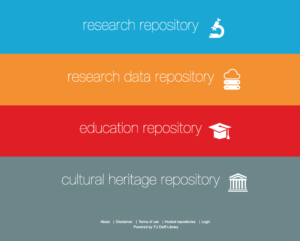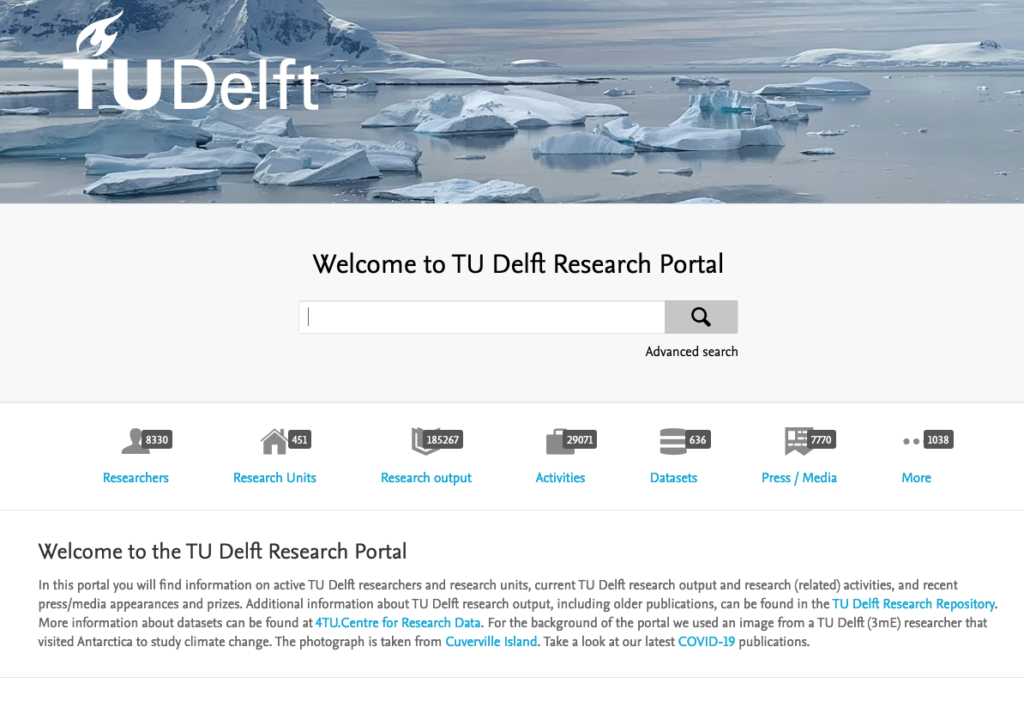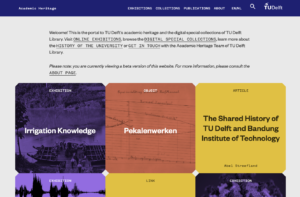One of the key parts of the Digital Service Programme is to update the strategic direction and technical infrastructure of the TU Delft Library Repository.
The current repository infrastructure serves many functions. Based on Islandora, along with various other components, it acts a mechanism for searching and downloading Green Open Access research articles, doctoral theses, conference papers, and various other research outputs. Different instances of the repository also deliver Masters’ Theses and parts of TU Delft’s heritage collection.

As highlighted in the CNI report on institutional repositories (pdf), new demands from academic staff, the continual arrival of new services from third-party providers and changing institutional requirements mean many libraries are rethinking the role of their repository.
Below are some of the questions that these questions raise:
– Since the TU Delft repository was established, the Research Portal (based on the Pure system for recording research outputs) has also been launched. Is it necessary to have run both systems? Where should TU Delft present a record of its staff’s scholarly output?

– Can a library offer more engaging ways to publish longer forms of academic output (books and theses, for example)? Rather than simply downloading a pdf, can theses and book use protocols such as IIIF to make reading and using such documents a more satisfying experience?
– There is growing demand for university staff to publish and manage many other assets (images, lecture notes and videos, grey literature, events, policy documents). How can a new form of repository allow this freedom? What would that mean for library staff managing the documents and related metadata?
– TU Delft Library also runs its own publishing platform (based on the entirely separate Open Journals Systems software) and a separate instance of Figshare to manage its research data and software (as part of the federation of Dutch technical universities). There is also a platform for delivering open educational courses. Can all the formats these platforms deliver be combined under one infrastructure?
– The same goes for TU Delft’s heritage collection(s). While such digitised collections will always require a dedicated interface, can they make use of a shared underlying infrastructure?

– And a more practical question: which current infrastructure(s) is the most suitable to deliver on all these questions? Open source solutions like DSpace, Islandora, Dataverse, Samvera, VIVO, OJS or InvenioRDM. Managed solutions like Tind. Or commercial offerings such as Figshare?
There are some other resource available to help with these questions. The Next Generation Repositories report by the Coalition of Open Access Repositories lays down some important principles that can provide a foundation for answering the questions above.
But the largely technical principles in this report should not disguise the fact that the strategic direction needs to be worked out first. What does the library (and by extension the university) want from its repository?